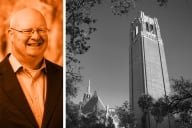You have /5 articles left.
Sign up for a free account or log in.
As an association representing institutions of higher learning, the Council for Christian Colleges and Universities is sensitive to the claims of institutional autonomy presented by the Hastings College of the Law in Christian Legal Society v. Martinez. However, as the institutions within our organization are religious in nature, we are also acutely aware of the religious freedom concerns presented by this case. Ultimately, because this decision did not determine the constitutionality of the more common "non-discrimination clauses," its limited scope is such that this ruling has little broad applicability beyond "all-comers policies" at public universities, and in many ways leaves more questions than it answers. As higher education works to understand the implications of this limited decision, and formulate policies in light of it, the academy must wonder whether all-comers policies -- in which public colleges limit recognition to student groups that will allow any and all students to join and run for office -- though deemed constitutional, really help further the laudable goal espoused by Justice Anthony Kennedy of "enabling [students] to explore new points of view."
In his concurrence Justice Kennedy observes that "vibrant dialogue is not possible if students wall themselves off from opposing points of view." But one might ask how a vibrant dialogue is possible if opposing points of view are not present. Here, Hastings argued that CLS built the wall by excluding members who would not sign its statement of faith. Did Hastings itself, however, not build a wall by rejecting CLS as a student organization? CLS had a version of an all-comers policy, allowing attendance and participation by non-members, requiring the statement of faith only for members and leaders. Would not vibrant dialogue have occurred more readily on campus during club meetings, between members with one point of view and non-members with different points of view, than by rejecting CLS? Further, this analysis ignores the reality that vibrant dialogue occurs within groups of like-minded people – the vigorous debates within political parties clearly demonstrate this. And at a macro level, had CLS remained a student organization, perhaps another Christian group with different beliefs would have formed, creating vibrant dialogue between these two groups.
It is easy to mischaracterize CLS’s membership policy and to oversimplify it as outright discrimination, but a more nuanced approach might be more useful to the academy as it moves forward in applying this case. In Corp. of the Presiding Bishop v. Amos, a central case to the bounds of religious association, the then-leader of the liberal wing of the Court, Justice William J. Brennan, explained that a religious community defines itself by "determining that certain activities are in furtherance of an organization’s religious mission, and that only those committed to that mission should conduct them, is ... a means by which a religious community defines itself." And this Court itself reaffirmed the constitutionality of CLS’s expressive activity, "[i]nsisting that an organization embrace unwelcome members we have therefore concluded, 'directly and immediately affects associational rights.' " Preventing discrimination on campuses is a worthy goal, but reflexively applying the hatchet of an all-comers policy may actually undermine equally worthy goals: free speech, freedom of association, and an open marketplace of ideas. Might public colleges and universities instead formulate more nuanced policies that take care to ask whether a group’s belief-based membership requirements are "in furtherance of [the] organization’s religious mission," instead of simply rejecting these groups outright?
A key tenet of almost all religions is that they hold beliefs distinct from other religions and the non-religious -- communal beliefs are essential to the religious. Religion has often been challenged to define these beliefs in the face of cultural shifts, but it is the prerogative of those within the religion to determine those boundaries. And as mystifying or even offensive as some of those ideas are to those outside (or even inside) that religion, a key principle of our American ideals is that those ideas be challenged not rejected.
Within the CCCU itself this case sparked debate – debate which we welcomed as a sign of a healthy and robust organization. Such debate is part of the fabric of academe. If in an effort to limit liability more public and colleges and universities adopt these all-comers policies, part of that fabric could be undone. Though they claim to promote diversity, they actually promote sameness. How can a robust marketplace of diverse ideas exist when no group is allowed to unite around a core set of unique beliefs that give them their identity?
Academia has long stood for a free and open expression of ideas, undergirded by the expectation that the best ones will ultimately rise to the top. Rather than merely “tolerat[ing]” unpopular viewpoints, as Justice Stevens suggests, public colleges and universities should engage them. As Thomas Jefferson said, referencing the University of Virginia, “This institution will be based upon the illimitable freedom of the human mind. For here we are not afraid to follow truth wherever it may lead, nor to tolerate any error so long as reason is left free to combat it."








